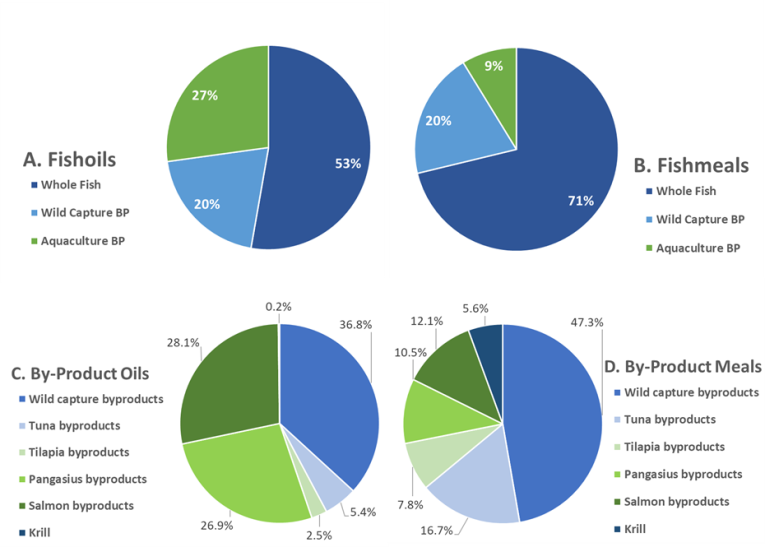This piece from Dr Brett Glencross, IFFO's technical director, was initially published in International Aquafeed – December 2021
I was watching the BBC’s “The Earthshot Prize” programme recently with my family and was impressed by the ingenuity of the world to rise to a challenge. In this fantastic television series, Prince William and Sir David Attenborough explore a range of simple, yet ambitious ideas to help fix our planet. I really empathised with the clear objective of searching for practical solutions offering hope for both humanity and nature. Not only is it a timely message, but one which fits well with the modern marine ingredients sector.
A quick review of the IFFO 2020 marine ingredients statistics shows that the production of fishmeal and oil from trimmings and by-products is on the rise. We now have almost half (48%) of all fishoils and 29% of all fishmeals coming from various by-product raw material streams (Figure 1A and 1B). Combined, that is close to one third of all marine ingredients currently produced. While the use of trimmings and by-products is not a new initiative in the marine ingredients sector, the momentum behind the use of these “circular” protein and lipids is clearly growing. Further examination of where all this comes from shows aquaculture as now a major player in the provision of fishoils, with both salmon and pangasius sectors being significant contributors (Figure 1C). On the fishmeal front, while aquaculture is a comparative minor contributor, we note that by-products from human food fisheries contribute 20% of all production, with most of this coming from various pelagic and demersal fisheries (Figure 1D).
The other brilliant part about using by-products is their low environmental footprint. As most lifecycle assessment (LCA) analysis in the feed sector is now based on economic allocation, the primary catch/production of fish for human consumption means that most of the economic allocation is taken by that portion, even though that fraction often represents less than 50% of the raw material. Therefore, the lower-value by-products get attributed an even lower allocation of the environmental footprint. So, materials that are already low CO2 discharge, low energy use, with little to no reliance land or freshwater, become even less so. It is like getting a bonus on top of your bonus.
But what about the future? We are already aware of constraints to expanding the availability of wild-capture marine ingredients. And we still need to “add new things to the dinner table to accommodate those increasing numbers of mouths to feed”, irrespective of whether they’re human or animal. But if aquaculture keeps growing, doesn’t that give us a growing resource base from which to make marine ingredients too? What if we could mobilise production of marine ingredients beyond the salmon, pangasius and tilapia sectors? Given we are already growing millions of tonnes of fish and shellfish, wouldn’t ensuring that we use of the non-edible parts of that produce for making marine ingredients be a better part of building a waste-free world? Certainly food-for-thought.

Figure 1A – 1D. Production in 2020 of fishoils (A) and fishmeals (B) from whole-fish and by-products (BP). Shown in figure 1C is the breakdown of sectors contributing the by-product oils, and figure 1D the sectors contributing the by-product meals.
Dr Brett Glencross








